Portrayals of tortoises and turtles
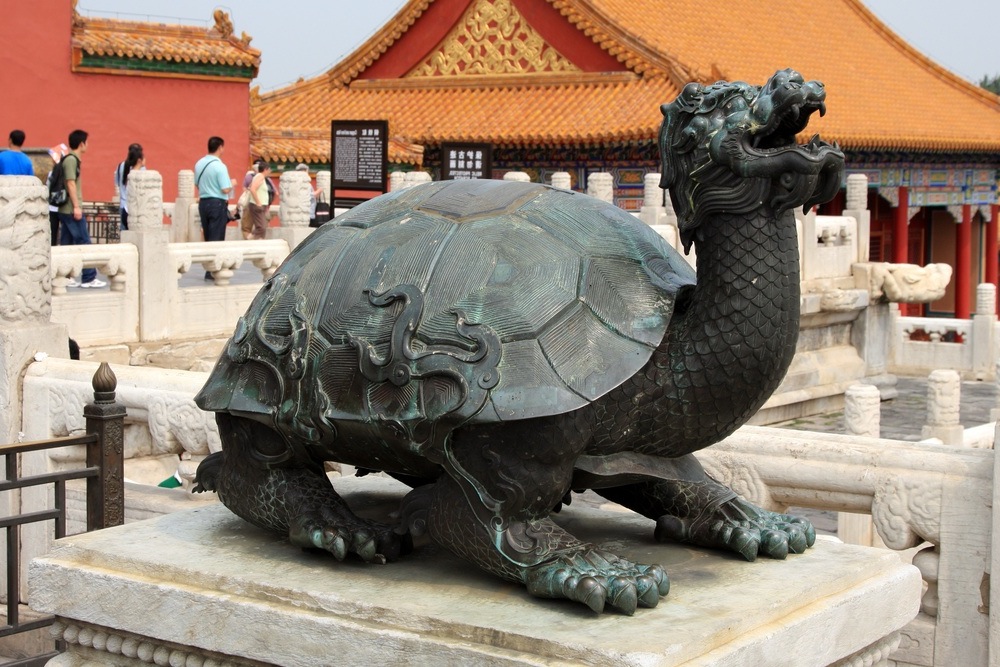
There has been a long-standing fascination with reptiles, extending right back to the earliest days of recorded human history. This has led to them acquiring an important cultural significance in many parts of the world.
Chelonians - as tortoises and turtles are collectively known - have been especially prominent in eastern symbolism. This can be seen as long ago as the reign of the Chinese Emperor Hawang-ti, about 4,500 years ago.
The image of the tortoise in this instance was entwined with that of a snake, as it was then believed all tortoises were female, and that they mated with snakes. These reptiles were considered to offer protection against evil, and so symbolic flags portraying this unlikely reptilian combination were always carried at the front and rear of the emperor's entourage. Jade tortoise and snake
Powerful symbolism
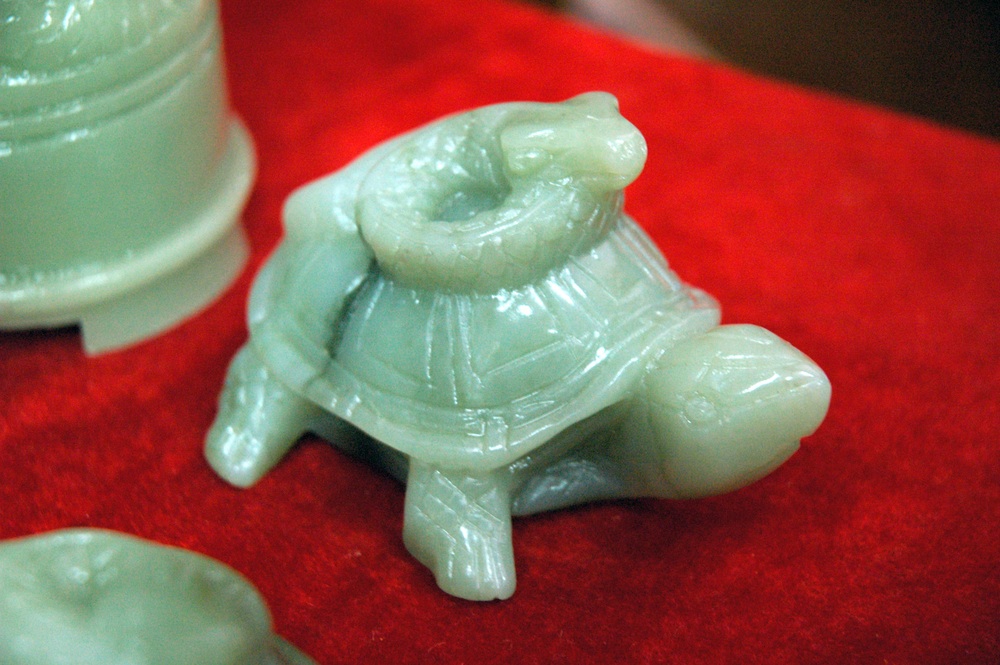
The tortoise became one of four most significant animal symbols in the Chinese astronomy, as reflected by the black tortoise of the north, which is the symbol of winter. Once again, these early portrayals typically show the tortoise embraced by a snake. Jade carvings being sold as souvenirs in China today still portray a tortoise linked with the figure of a snake.
Chinesedragon tortoises on coinsThese reptiles also gained a reputation as a symbol of luck. Chinese dragon tortoises standing on a pile of coins (left) are traditionally regarded as a common symbol of prosperity, particularly in the context of a new business venture.
Many representations of tortoise have what is effectively the head of a dragon, combining two ancient symbols together, making it even harder to determined whether the stylised portrayal is that of a tortoise or a turtle!
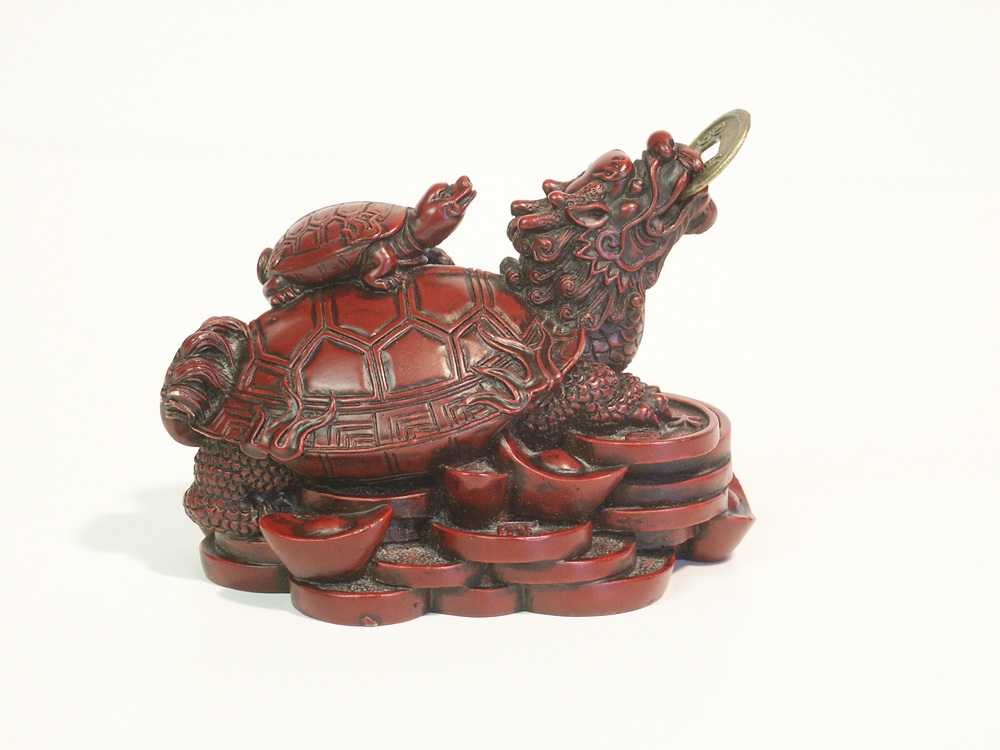
In the traditional Chinese practice of feng shui, which has become popular in the west over recent years as a means of designating the beneficial arrangement of a home, the tortoise is also regarded as a symbol of good luck. It is believed to bring many blessings when a representation of this reptile is located in a back garden, alongside a pond.
Longevity
Observations about tortoises gave rise to other beliefs. The great age which these reptiles can attain meant that they were regarded as symbols of wisdom in eastern culture generally. They have also become closely-linked with marriage. Chelonians proved to be a popular subject for netsuke carvings, which were produced in Japan from the 1600s onwards. Gifts of such netsukes were believed to bring both luck and longevity for a newly-married couple.
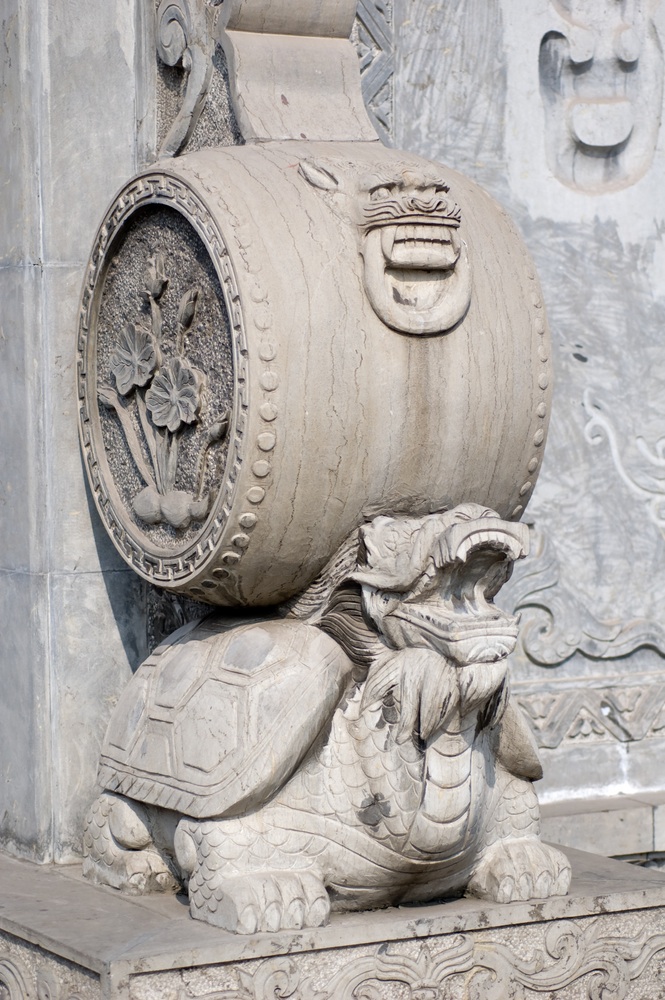
Turtle supporting the world.The broad shell of the tortoise is often portrayed as supporting objects, as reflected here by this ancient pedestal in Beijing, China. In many eastern countries, tortoises are shown as supporting the weight of the world on their backs. Ancient Indian artifacts often take this imagery further - the tortoise supports an elephant, which in turn carries the world on its back.
Chelonians are prominent in the culture of Vietnam as well, which used to be a province of China. At the Temple of Literature in the Ho Chi Minh city (formerly Hanoi), commemorative slabs known as stelae are supported on the backs of carved turtles. The slabs are inscribed with the names and birth places of 1306 men awarded doctorates at this imperial centre of learning between 1484 and 1780.

It is not just in the Orient that beliefs about tortoises being able to carry the weight of the world on their backs arose. A similar theme is shown here (right) in an artifact from Tunisia in North Africa.
Thai sculpture
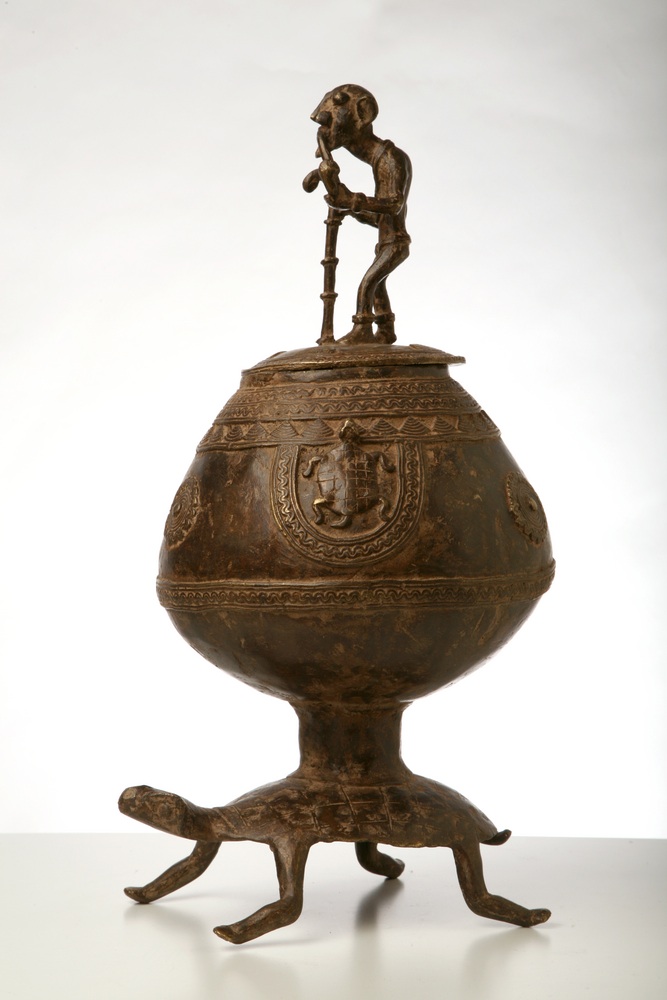
Turtle island, ThailandA truly impressive sculpture greets visitors to Koh Tao - Turtle Island - in Thailand. Located on the eastern side of the Gulf of Thailand, this particular island is so-called because of its turtle-like shape. It is an important breeding ground for both hawksbill and green turtles.
Literary influence
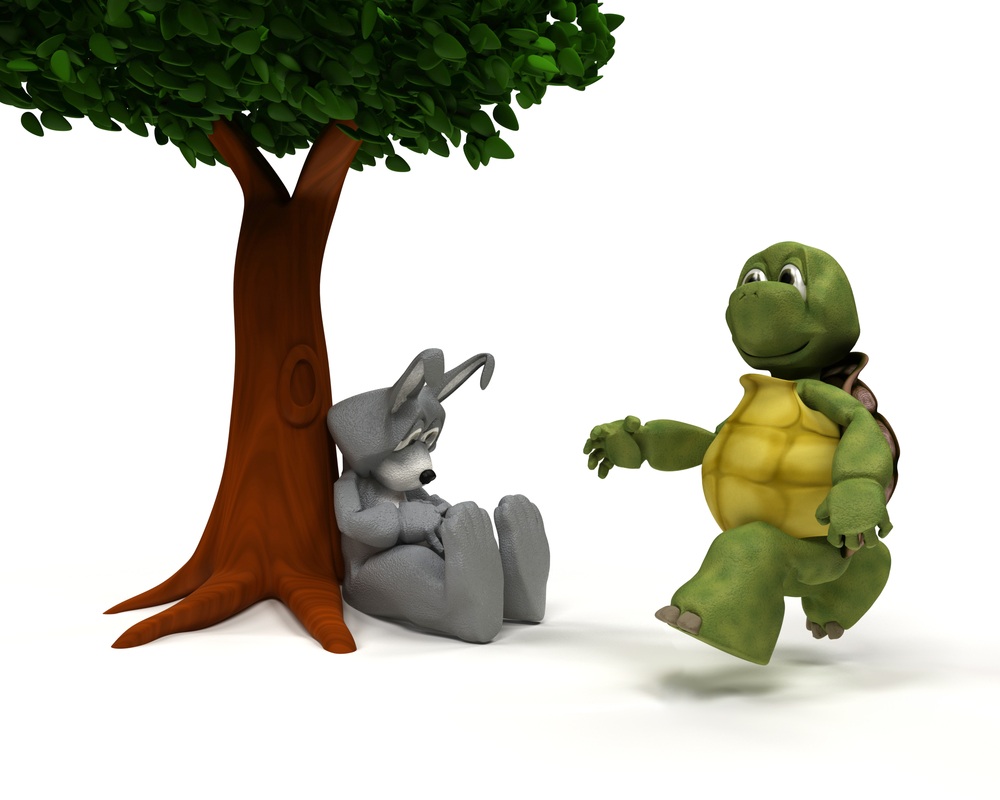
The influence of tortoises is also apparent in early European culture too. The fable of The Hare and the Tortoise forms part of a group of stories with moral undertones reputedly written by a slave called Aesop, who live about 630BC in ancient Greece. Here is a modern portrayal capturing the moment when the over-confident, distracted hare is overtaken by the persistent, plodding tortoise.